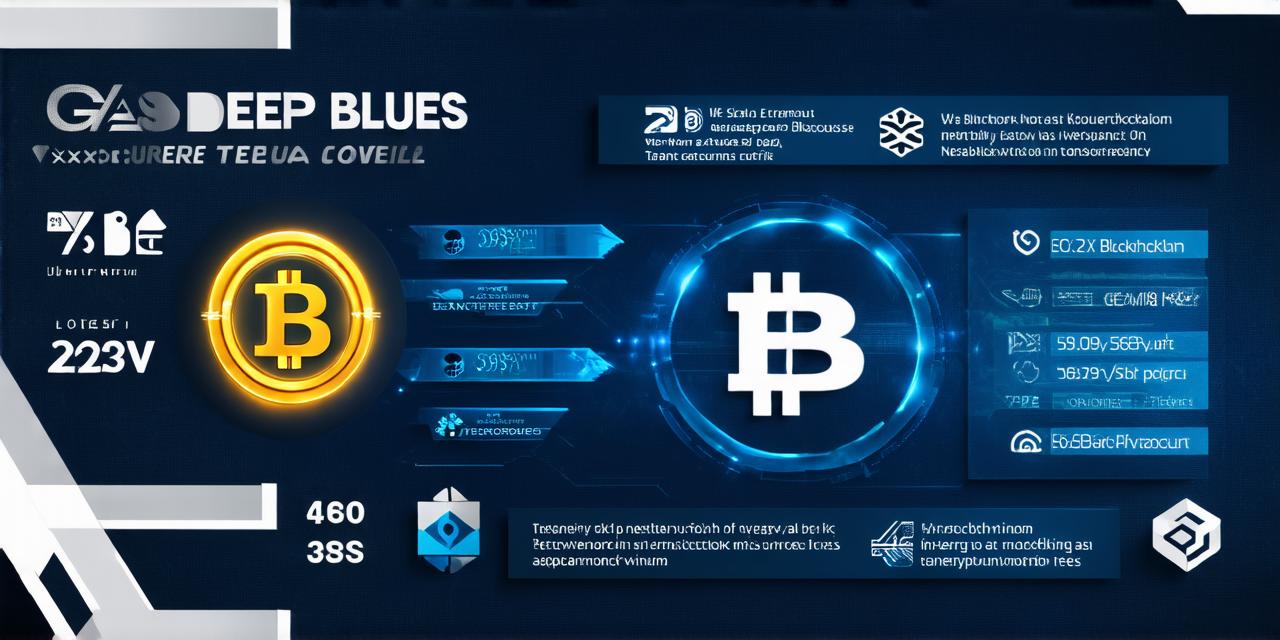What is Gas in Blockchain?
Gas in blockchain refers to the amount of computational power needed to execute a transaction or contract on a blockchain network. It is a measure of the complexity of a transaction and is expressed in units called gas. The more complex a transaction, the more gas it requires. Gas is paid in cryptocurrency and serves as a way for users to incentivize miners to validate transactions on the network.
The Importance of Gas in Blockchain
Gas plays a critical role in the performance of a blockchain network. It helps to ensure that transactions are processed efficiently and securely, without overloading the network or causing delays. Without gas, transactions would take longer to process, be more expensive, and potentially cause security vulnerabilities on the network.

Real-Life Examples of Gas in Blockchain
1.
Ether (ETH) Network
Ethereum, the world’s second-largest cryptocurrency by market capitalization, uses gas to power its smart contract functionality. Smart contracts are self-executing contracts that run on the Ethereum blockchain and can be programmed to execute automatically when certain conditions are met. Gas is used to pay for the computational resources required to execute these smart contracts, ensuring that they are processed quickly and efficiently without overloading the network.
1.
Bitcoin Network
Bitcoin also uses gas to power its transactions. However, because Bitcoin’s blockchain has a limited scalability, transactions on the network can become slow and expensive if there is too much demand for processing capacity. This can lead to delays in transaction processing and potentially cause security vulnerabilities on the network.
1.
Ripple Network
Ripple is a payment protocol designed for fast and low-cost cross-border transactions. It uses gas to power its transactions, but unlike Bitcoin, Ripple has a centralized infrastructure that can scale up or down as needed to meet changing demand. This allows Ripple to process transactions quickly and efficiently, even during periods of high demand.
How Gas is Calculated in Blockchain
The amount of gas required to execute a transaction on a blockchain network depends on several factors, including the complexity of the transaction, the current demand for processing capacity on the network, and the price of gas at the time of execution. Gas prices can vary depending on a number of factors, including network congestion, transaction volume, and competition among miners.
Gas is calculated based on a formula that takes into account several variables, including:
1.
Transaction Complexity
The more complex a transaction, the more gas it requires. This includes factors such as the number of inputs and outputs in the transaction, the size of the data being transmitted, and the complexity of the smart contract being executed.
1.
Current Demand for Processing Capacity
If there is high demand for processing capacity on a blockchain network, transactions will take longer to process and be more expensive to execute. This can lead to delays in transaction processing and potentially cause security vulnerabilities on the network.
1.
Price of Gas
The price of gas can fluctuate depending on a number of factors, including network congestion, transaction volume, and competition among miners. The higher the price of gas, the more expensive it is to execute transactions on the network.
FAQs on Gas in Blockchain
1.
What is gas in blockchain?
Gas in blockchain refers to the amount of computational power required to execute a transaction or contract on a blockchain network. It is expressed in units called gas and is paid in cryptocurrency.
1.
Why is gas important in blockchain?
Gas helps ensure that transactions are processed efficiently and securely, without overloading the network or causing delays. It also helps prevent malicious actors from overwhelming the network with too many transactions.
